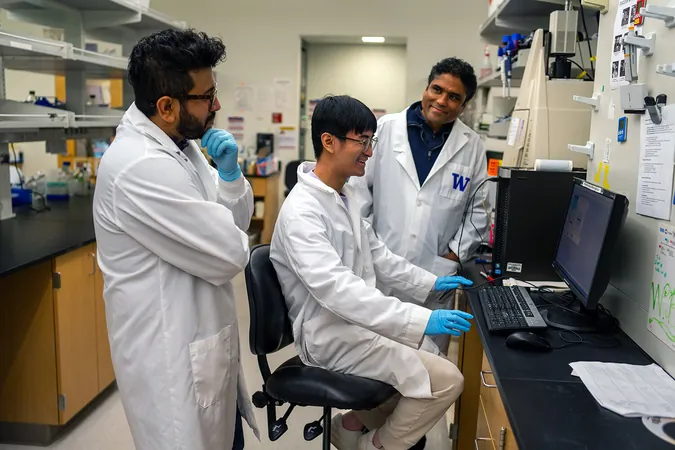
Breakthrough Study Reveals How Cellular RNA Fights Off Viruses – A Game Changer for Antiviral Therapies!
2024-12-19
Author: Jacques
Introduction
In an astonishing breakthrough, scientists have unveiled a critical new function of cellular RNA in the defense against RNA viruses. Recent research highlights that certain RNA molecules within our cells play a pivotal role in regulating antiviral signaling, a key component of the immune response to viral infections.
Published in the prestigious journal *Science*, this research brings to light how our body's own RNA contributes to the intricate orchestration of immune reactions against viral attacks. As RNAs are increasingly acknowledged for their dual role as both potential drugs and targets for drug development, the implications for RNA-based therapies in treating infections and autoimmune disorders could be monumental.
Research Team and Background
The study is spearheaded by Ram Savan, a prominent immunology professor at the University of Washington School of Medicine in Seattle, alongside lead scientist Nandan S. Gokhale, who is part of the esteemed Helen Hay Whitney and NIH Pathway to Independence programs. The collaborative effort includes several researchers from both the University of Washington and Duke University.
Mechanism of Action
Savan explains that within the body, specific proteins act as molecular sentinels. When these sentinels detect the presence of viral RNA, they initiate a cascade of immune responses by activating interferons via the mitochondrial antiviral signaling (MAVS) pathway. MAVS is strategically located on the outer membrane of mitochondria, which are the energy-producing powerhouses of the cell.
The detected viral RNA triggers MAVS proteins to form self-assembled complexes known as signalosomes. These signalosomes represent hubs of protein-protein interactions that significantly amplify immune signals, unleashing potent antiviral responses against pathogens.
Significance of Cellular RNA
"Our research goes beyond traditional protein interactions," Savan states. "We spotlight the vital contributions of cellular RNA in not just influencing but regulating interferon responses."
However, the scientists underscore that a delicate balance is essential in the antiviral response. It must be robust enough to eliminate viral threats while avoiding excessive reactions that could lead to tissue damage or trigger autoimmune diseases, symptoms of which have been associated with overactive interferon pathways in conditions like lupus.
Discoveries and Implications
While previous research demonstrated that RNA could interact with and modify protein complexes, the precise role of RNA in modulating immune signaling remained largely unexplored until now. This team aimed to delve into how cellular RNA binds to and impacts the function of MAVS proteins.
Through their experiments, they found that cellular RNA plays a crucial role in the activation of MAVS signalosomes after sentinels alert the immune system of viral RNA's presence. Remarkably, the study discovered that MAVS binds directly to host RNA through a specific region of the MAVS protein, enhancing RNA's ability to modulate factors necessary for a heightened antiviral response.
Future Directions
In a series of robust analyses, researchers identified which proteins interacted with MAVS in the presence of RNA and how these relationships affected interferon induction and the restriction of viral replication. The findings not only confirm the role of cellular RNA in boosting MAVS signaling but also pave the way for understanding how RNA could regulate other immune signaling complexes.
This groundbreaking study opens up promising avenues for innovative antiviral treatments, emphasizing the need for further exploration of RNA's role in immunology. With the rise of viral infections and autoimmune diseases, the potential for RNA-targeted therapies is more critical than ever. Stay tuned as this research unfolds, potentially transforming the landscape of viral defense strategies!









 Brasil (PT)
Brasil (PT)
 Canada (EN)
Canada (EN)
 Chile (ES)
Chile (ES)
 España (ES)
España (ES)
 France (FR)
France (FR)
 Hong Kong (EN)
Hong Kong (EN)
 Italia (IT)
Italia (IT)
 日本 (JA)
日本 (JA)
 Magyarország (HU)
Magyarország (HU)
 Norge (NO)
Norge (NO)
 Polska (PL)
Polska (PL)
 Schweiz (DE)
Schweiz (DE)
 Singapore (EN)
Singapore (EN)
 Sverige (SV)
Sverige (SV)
 Suomi (FI)
Suomi (FI)
 Türkiye (TR)
Türkiye (TR)